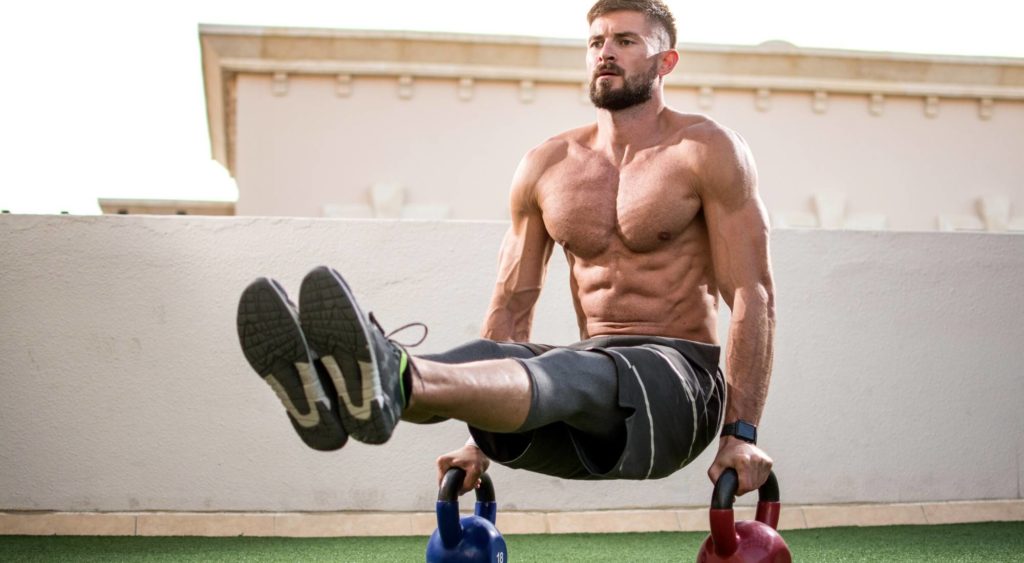
Imagine looking in the mirror…
Pumped arms. Shredded abs. Toned legs.
You want that, right? Who doesn’t want that?!
So, logically, you’re thinking full-body training is the answer.
In this guide, we share what full-body training is, why what 99% of people think about full-body training is wrong, and some killer workouts to get you started on your full-body training journey.
Contents
- What is Full Body Strength Training?
- What Full Body Training is NOT
- The World Has “Full Body Training” Wrong
- Full Body Weight Training – An Example of What NOT To Do
- Full Body Circuit Training – An Example of What NOT To Do
- Full Body Training Program – The Best Examples
- Can You Train Full Body Every Day?
- Full Body Trainer – What You Should Look For in a Fitness Coach
What is Full-Body Strength Training?
Full-body training, in our opinion, is NOT “how can I work every muscle within a 1-hour workout?”
Rather, it’s “how can I use my body as one unit and structurally strengthen the body?”
What do we mean by structurally strengthening the body?
Remember, your body is one unit. By structurally strengthening, we mean that your body, when working as one unit, gets stronger.
An example will likely help:
Let’s say that you struggle to clean out the garage. There are some heavy boxes that you have to lift from the floor to some high shelves.
To lift those boxes requires your whole body. You need stabilization, strength, mobility, and more.
Going to the gym and doing seated bicep curls might make your biceps “stronger,” but it won’t structurally strengthen your whole body.
Make sense?
So, to get things straight…
Full body strength training is working your body as ONE unit, instead of isolating specific muscle groups. Yet, with a full-body training regimen, you can still strengthen specific muscles, such as the biceps.

Think about it like this:
You can do some bicep curls. Then some isolated shoulder raises. Then use the calf raise machine.
Sure, you’re “strengthening” those isolated muscle groups—but you’re not using your body as one unit.
On the other hand, you can do a sandbag workout:
- Pick up a heavy sandbag
- Walk it across the room
- Put it down
- Pick it back up
And you’ll be engaging and activating your ENTIRE body at one time.
What’s great about this style of a full-body workout?
- You’ll be activating your biceps (leading to more muscular arms).
- You’ll be engaging your core (leading to shredded abs).
- You’ll be working your legs (leading to toned legs).
- And most importantly, you’ll be strengthening your body as ONE UNIT.
What Full-Body Training is NOT
Most people don’t REALLY understand what full-body training is.
Don’t believe us?
Keep reading.
Edgar, In Motion O.C.’s Director of Fitness, says:
“One thing I completely work against is isolating the body and isolating the muscle…One of the biggest problems in our industry, and it goes back to bodybuilding and its impact over the last 50-75 years, is isolating the muscle.”
He goes on to say:
“I go back to how we move in nature…and trying to get the body back to human default just by moving the way the body is designed to move.”
Doing a seated bicep curl doesn’t translate (at all!) to any functional movement humans perform in nature or how our bodies are designed to move.
What is Edgar saying? What’s the truth about what full-body training is NOT?
Full-body training is NOT a workout that looks like this:
- Isolating the bicep with a bicep curl, then…
- Moving to the legs and isolating the quads while doing leg extensions, then…
- Moving to the back with isolated lat pulldowns.
Just because you’re working many muscles throughout your body does NOT mean you’re getting a full-body workout.
Why Should You Avoid This Mainstream Style of Full-Body Training?
There are two reasons:
- It’s not functional and doesn’t build true strength
- It can lead to muscle imbalances and injury
First, why is isolating muscle groups during a “full-body exercise program” not functional?
At In Motion O.C., we believe that strength is when you can participate in EVERY activity of your daily life, and of your desired life, without pain. By “desired life,” we mean participating in activities at the level that you want.
For example, not just:
- Skiing
- Tennis
- Playing with grandchildren
- Picking up boxes if your job is a UPS driver
But also:
- Skiing for an entire weekend without pain
- Playing tennis 2 days a week and improving your serve
- Playing with your grandchildren without being sore after
- Picking up boxes if your job is a UPS driver WITHOUT going home with aches and pains
Picking up boxes if your job is a UPS driver WITHOUT going home with aches and pains
Isolating the bicep, or sitting on a hamstring curl machine, doesn’t translate to real-life activities.
Second, how can isolating muscle groups lead to imbalances and potentially lead to injury?
Your body is complex.
People think of muscles as…chest, bicep, tricep, shoulders.
However, that’s not really how it works.
There’s no such muscle as the “shoulder.” Your shoulder is a complex, interconnected part of your body with ligaments, tendons, and MULTIPLE muscles (some larger than others).
So, when you isolate the “shoulder” with a single-armed overhead press, you’re only activating the “shoulder” in a certain way.
Quite often, these isolated exercises are designed to strengthen the BIG muscle groups but fail to functionally strengthen and stabilize the smaller muscles, tendons, and ligaments.
Consequently, you’re not actually getting structurally stronger and more stable, which can potentially lead to injury.
To prove that the vast majority of the world has full-body strength training wrong, read the next section.
The World Has “Full-Body Training” Wrong
To understand why the world has full-body strength training wrong, it’s important to look at a common “full-body” strength training routine.

Full-Body Weight Training – An Example of What NOT To Do
Here’s an example of what a full-body weight training session might look like:
- 3 sets of straight arm shoulder raises (15 reps each)
- 3 sets of hip abduction & hip adduction on a machine (15 reps each)
- 3 sets of hammer curls (15 reps each)
- 3 sets of back squats (15 reps each)
- 3 sets of bench press (15 reps each)
- 3 sets of hamstring curls (15 reps each)
This is considered a “full-body” workout because you’re hitting the biceps, the shoulders, the hamstrings, the quads…
But not a single exercise above involves using the FULL body as one unit.
Full-Body Circuit Training – An Example of What NOT To Do

Circuit training is where you move from one exercise to the next.
Some people split these circuits into different groups, called supersets.
Below is an example of a mainstream full-body circuit training workout.
Superset #1 (complete two times):
- 12-15 reps of isolated bicep curls with dumbbells
- 12-15 reps of calf raises holding weights
- 12-15 reps of alternating single-arm shoulder press with dumbbells
- 25 crunches
Superset #2 (complete two times):
- 12-15 reps leg extensions on the weight machine
- 12-15 reps of single-arm tricep kickbacks using dumbbells
- 12-15 reps of chest flys using dumbbells
- 25 crunches
This is only considered a “full-body” workout because you’re working multiple muscle groups.
But not a single exercise above involves using the FULL body as one unit.
Full-Body Training Program – The Best Examples
There’s actually not a “perfect” full-body training program.
Let us explain:
A 67-year old woman who loves playing pickleball, playing with her grandchildren, and going on walks with her husband is NOT going to need the same full-body training program as a 23-year old man who is training for a Spartan Race.
While we’d love to give you examples of the best full-body training programs, we simply can’t (and shouldn’t ethically) do that.
Every person has a different body.
Every person has different fitness goals.
Every person has a different training schedule.
So, therefore, how can we share a universal full-body training program?
Can You Train Full-Body Every Day?
There’s not an easy answer to this.
The best answer we can give? It depends.
- You can train full-body every day if the workout is light and leaves you feeling energized and refreshed the next day.
- You should not train full-body every day if you are working out really hard, pushing your body to the limits, and risking injury.
Full-Body Trainer – What You Should Look For in a Fitness Coach
When looking for a full-body trainer, here are a few things you should look for:
- A trainer who has made fitness their life, and their craft.
- A trainer with experience (and case studies) helping people with full-body exercises
- A trainer who believes fitness should be more than just having big muscles, but instead should promote health and wellness
- A trainer who treats the body as one unit and doesn’t encourage isolating muscle groups during workouts
If a trainer has the qualifications above, then you can likely trust them to help you achieve the results you’re looking for.



